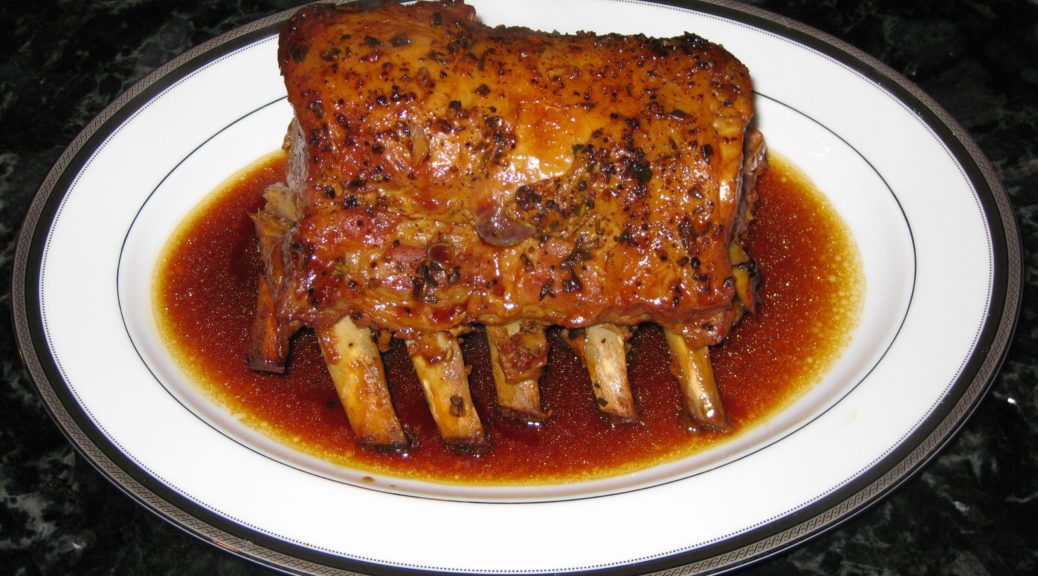February 14, 2018
Growing up, Sunday dinner almost always included some sort of pasta with my mother’s long-simmered Southern Italian sugo.
The sauce was made with large pieces of pork which were always served on the side. In addition, there might be meatballs, simmered in the sauce after being fried to a deep brown. Sometimes, actually, much more often than sometimes, there would be veal cutlets. This was back in the day when people didn’t really think about how veal was produced…or maybe it was produced more humanely back then. I’m not sure.
Sometimes a pork roast would accompany the pasta. Occasionally, though not often, the pork roast would be accompanied by potatoes and there wouldn’t be pasta on the table.
A Sunday without pasta, though, was quite unusual in my parents’ house.
Click HERE to join our mailing list and you’ll never miss a recipe again!
The pasta could have been homemade linguine or fettuccine, which my mother and her sister, my Aunt Margie, made on a regular basis and then dried and stored in large rectangular aluminum tins that once held baccala (salted cod).
Those tins had a myriad of uses, from protecting pasta and cookies to storing recipes and papers. Even though they were made of an inert metal, they had to be thoroughly scrubbed and allowed to air out, uncovered, for weeks to rid them of the smell of baccala.
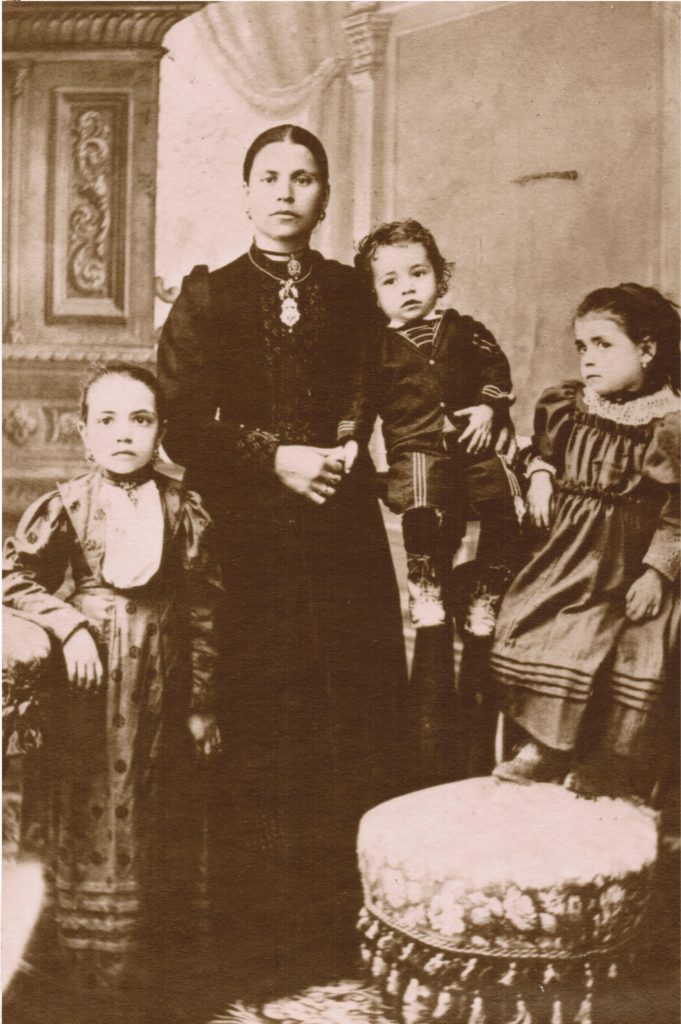
Sometimes the Sunday pasta was homemade ravioli, never was it gnocchi as my father didn’t like gnocchi. Those were reserved for dinners when my father was out of town.
Usually, though, the pasta was dried pasta from a box: spaghetti, rigatoni, wagon wheels, fettuccine, and so forth. Dried pasta is really a different sort of pasta with some different uses than fresh pasta (even if the fresh pasta is dried before use as mom and Aunt Margie often did).
Follow us on your social media platform of choice
I know many of you have heard me say this, but roasts in our house were much more similar in texture to pulled pork than the typical French-American style of “just-how-little-can-we-cook-this-hunk-of-meat-and-say-it’s-done” type of roast.
A huge advantage of this style of cooking is that you can know in advance when it will be done because it’s really the clock that counts, not the thermometer. I don’t like making an American style roast for a dinner party. It makes me crazy.
I don’t get to enjoy cocktails and I don’t get to enjoy the first course because I’m focused on when the thermometer might say the roast is done. While the temperature to be achieved is precise, the time is not.
On the other hand, the Italian style of roasting eliminates all of these problems because the meat is not “just barely cooked enough.” The collagen begins to liquefy and the roast becomes unctuous.
If you haven’t experienced this style of roast, give it a try. If you like it, look up my recipe for Italian Slow-Roasted Chicken or Turkey for the poultry equivalent.
If you have a favorite family recipe and a bit of a story to tell, please email me at santafecook@villasentieri.com and we can discuss including it in the blog. I am expanding the scope of my blog to include traditional recipes from around the country and around the world. If you haven’t seen Bertha’s Flan or Melinda’s Drunken Prunes, take a look. They will give you an idea of what I’m looking for.
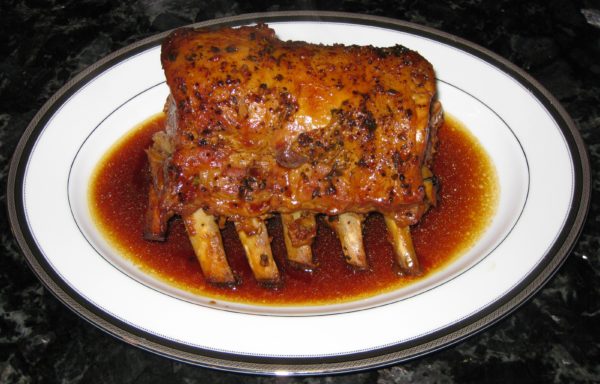
| Prep Time | 15 minutes |
| Cook Time | 4 hours |
| Servings |
people
|
- 3 pound bone-in pork loin roast
- 2-4 cloves garlic
- 1 tablespoon minced fresh rosemary or 1 teaspoon dry rosemary
- 1/2 cup white wine or water
- salt to taste
- black pepper freshly ground to taste
Ingredients
|

|
- Cut the garlic cloves into 3 to 4 slivers each.
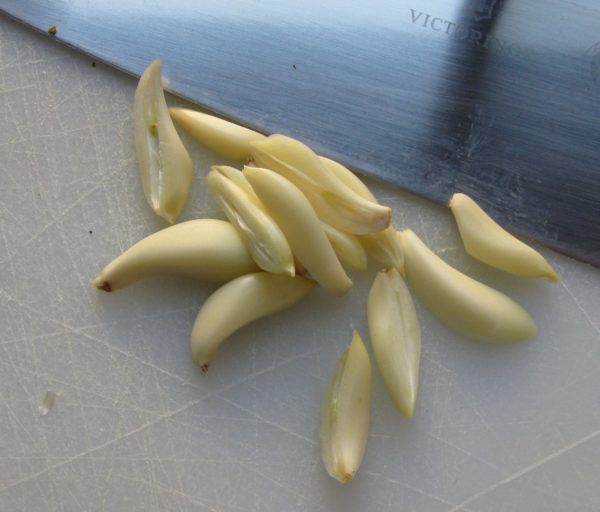
- Plunge a paring knife into the pork at intervals to make small pockets about 1 inch deep. Space the pockets out around the roast.
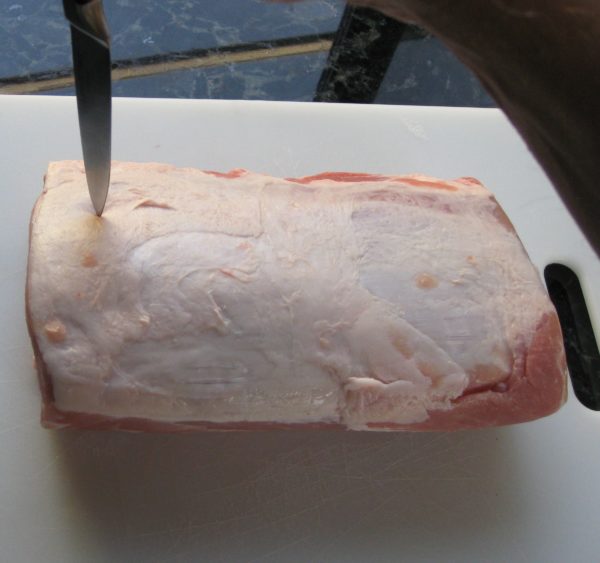
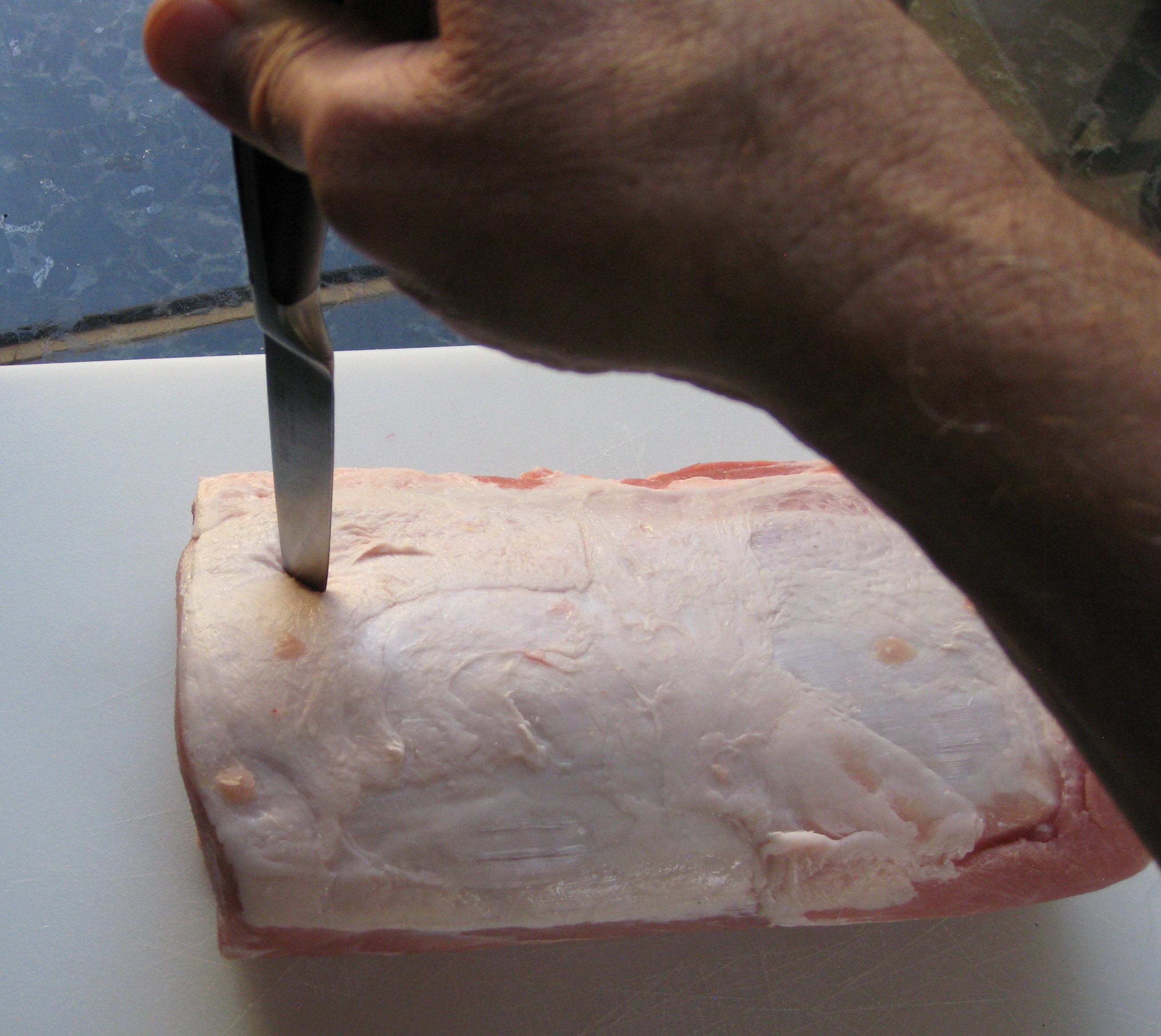
- Put a piece of garlic and some of the fresh rosemary into each pocket.
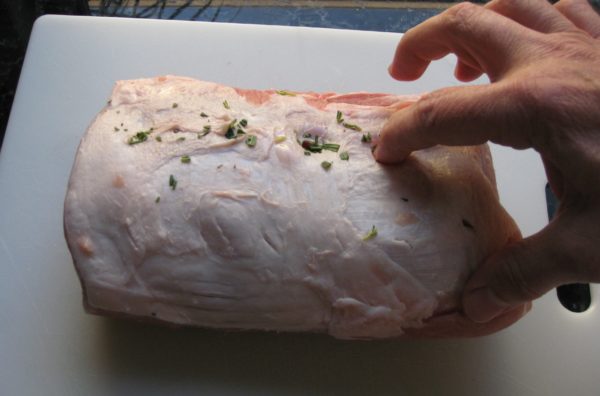
- Some of the rosemary will invariably stick to the fat cap. Don’t sweat it, just try to get most of it in the slits.
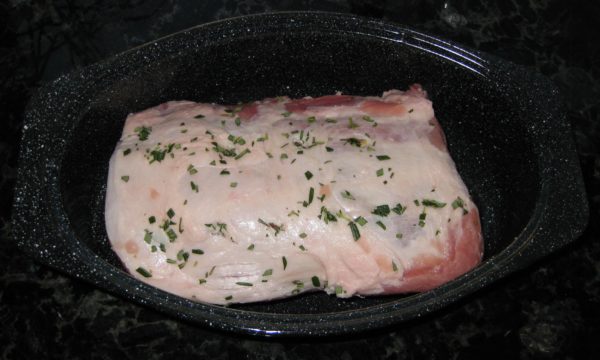
- Put the roast into a roasting pan that is just large enough to hold it.
- Generously season the roast with salt and pepper.
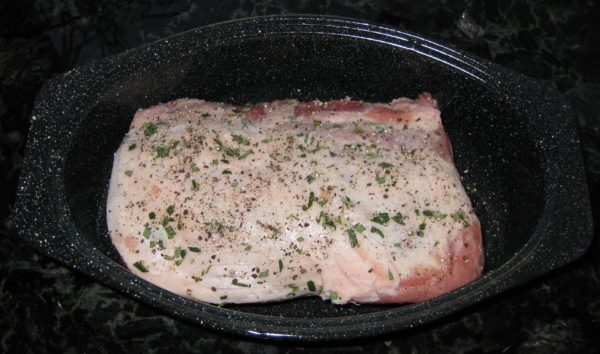
- Pour the wine (or water) into the bottom of the roasting pan.
- Roast, uncovered, at 375°F until the roast is browned a little, 45-60 minutes.
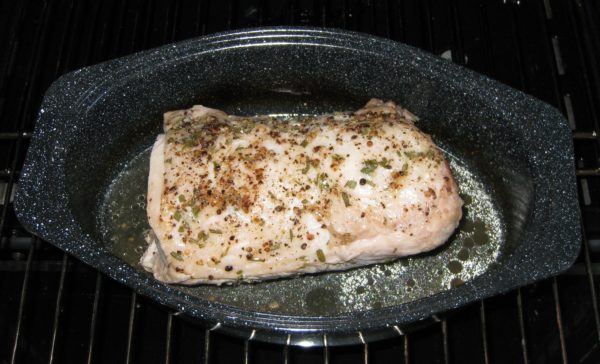
- Baste with pan juices.
- Cover and continue to roast at 275-300°F for about another three hours, basting with the pan juices every 30-45 minutes or so.
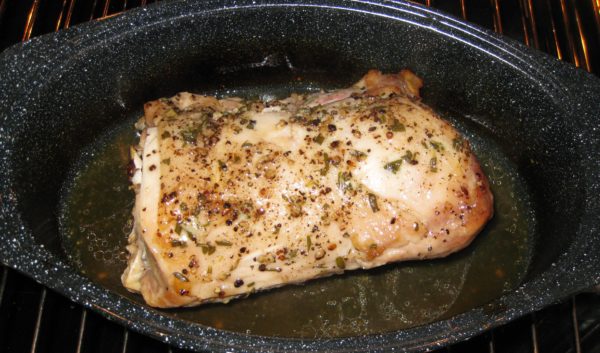
- The pan juices will dry up. Be careful not to burn the bits on the bottom of the pan, but allow them to brown before adding another ¼ cup of water or so. After two or three cycles of this, the pan juices will be a luscious dark brown.
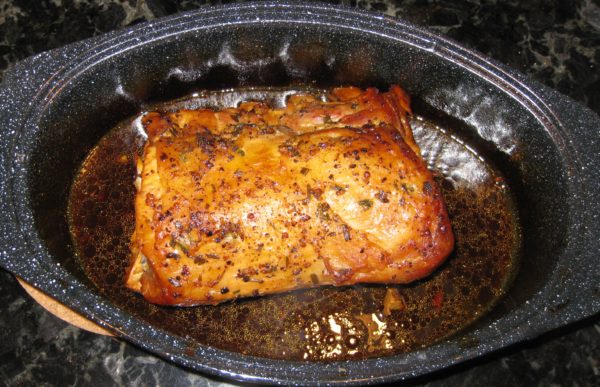
- Remove the roast from the pan. Allow to cool for 10 minutes.
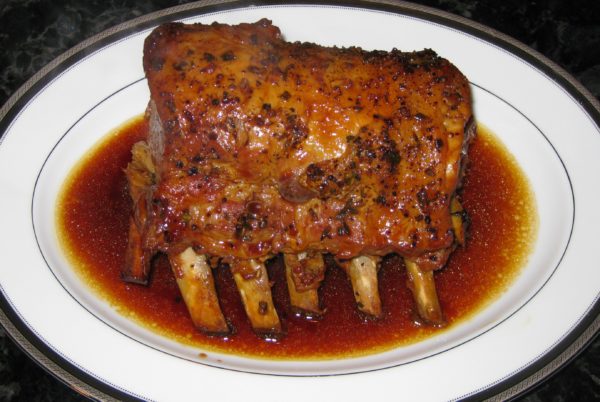
- To serve, pull the roast into large pieces. Don’t even try to slice it. It’s not supposed to slice.
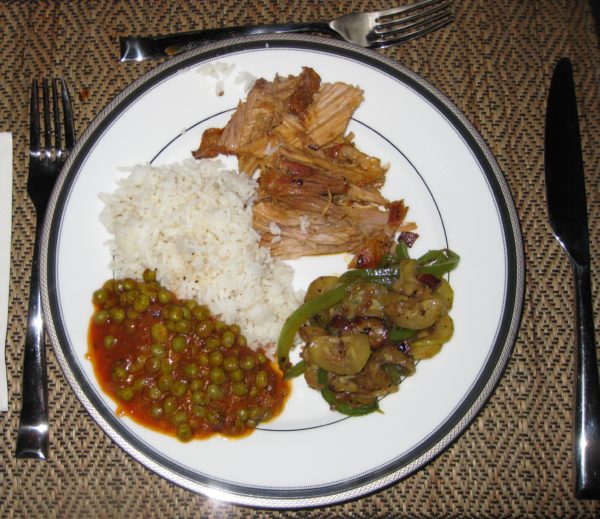
- Pour a little of the pan juices on top. Pass the rest.
Copyright © 2018 by VillaSentieri.com. All rights reserved.

